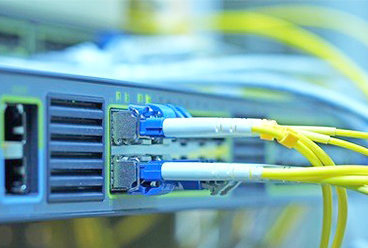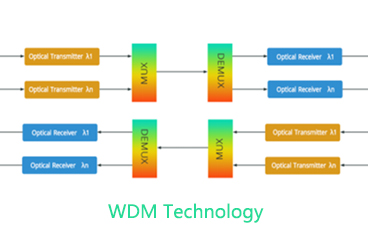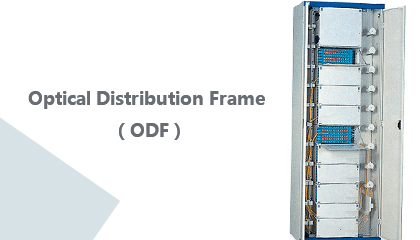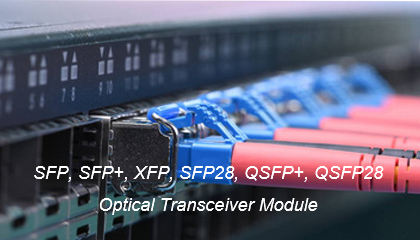What is PON?
Passive Optical Network, means (in the Optical Distribution Network, ODN ) does not contain any electronic devices and electronic power supplies. ODN is all composed of passive components such as optical splitter, and does not require expensive active electronic equipment.
The advantages of PON,
1. Able to provide transparent broadband and low-cost transmission capabilities.
2. Compared with the active optical network, its installation, opening and maintenance operation cost is low, and the system is more reliable and stable. Therefore, the access network is applying a large number of PON systems.
3. PON adopts the point-to-multipoint access mode, so the infrastructure costs of laying optical fibers between the central office and users are shared by users, which can increase the return on investment in network construction. Compared with the method of configuring end-to-end optical fiber for each user, the PON equipment that improves service for the same number of customers is smaller and occupies less space in the central office.
4. PON supports both traditional services (traditional telephone service POTS, analog TV) and broadband services (IP voice transmission, IPTV, broadband Internet access, etc.).
5. PON supports all residential users (using POTS, analog TV and data services) and many commercial users (using T1/E1 and Ethernet services) to share an access network (including physical layer and protocol layer) without using different connections Access to the network provides services for them separately, thus reducing the number of scattered access networks.
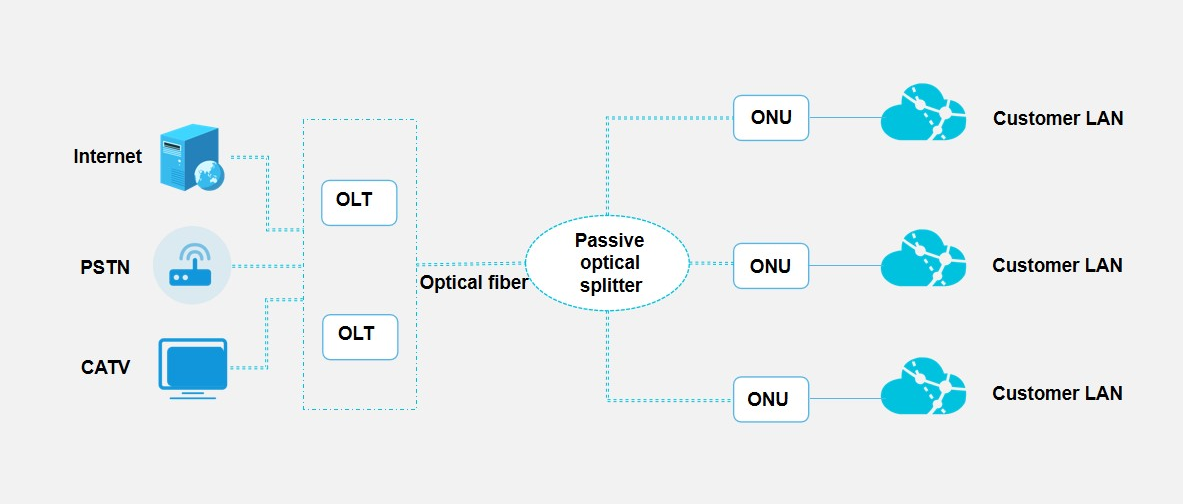
What is GPON?
Gigabit-Capable Passive Optical Network, is based on the latest ITU-TG.984.x (International Telecommunication Union TG.984.x) standard A generation of broadband passive optical integrated access standards, with many advantages such as high bandwidth, high efficiency, large coverage, and rich user interfaces, is regarded by most operators as an ideal technology for achieving broadband access network services and comprehensive transformation.
The features of GPON,
1. Unprecedented high bandwidth, the speed is up to 2.5 Gbps.
2. QoS guaranteed full service access.
3. Support TDM business well.
4. Simple and efficient adaptation package.
5. Powerful OAM capabilities.
6. The technology is relatively complex and the equipment cost is high.
The advantages of GPON, 1. Longer transmission distance, using optical fiber transmission, the coverage radius of the access layer can reach 20 kilometers. 2. It can provide higher bandwidth, for each user downlink 2.5G, uplink 1.25G (physical layer). 3. Strong splitting characteristics, multi-channel to home fiber can be led out from the central office but root fiber after splitting, saving fiber resources.
What is EPON?
Ethernet Passive Optical Network, is a PON technology based on Ethernet. Combining Ethernet and PON technology, using PON technology at the physical layer, using the Ethernet protocol at the data link layer, and using the PON topology to achieve Ethernet access. Therefore, it combines the advantages of PON technology and Ethernet technology, low cost, high bandwidth, strong scalability, compatibility with existing Ethernet, and convenient management.
What is OLT?
Optical Line Terminal, optical line terminal, is used to connect the terminal equipment of the optical fiber trunk line. The OLT is the core component of the optical access network, equivalent to the switch or router in the traditional communication network, and is also a multi-service providing platform. It is generally placed at the central office to provide a user-oriented optical fiber interface for a passive optical fiber network.
The functions of OLT,
1. Connect the upper network to complete the upstream access of the PON network.
2. Through the ODN network (consisting of optical fiber and passive optical splitter), it is connected to the client equipment ONU. Realize functions such as control, management and ranging of the ONU of the user-end equipment.
3. Broadcast Ethernet data to ONU
4. Initiate and control the ranging process, and record the ranging information
5. Allocate bandwidth for the ONU, that is, control the start time of the ONU to send data and the size of the sending window.
What is ONU?
Optical Network Unit, ONU is divided into active optical network unit and passive optical network unit. ONU is a user-side device in an optical network. It is placed on the user side and used in conjunction with an OLT to implement Ethernet Layer 2 and Layer 3 functions and provide users with voice, data, and multimedia services.
The functions of ONU,
1. Selectively receive the broadcast sent by the OLT, if you need to receive the data, you must respond to the OLT
2. Collect and buffer the Ethernet data that users need to send, and send the buffered data to the OLT according to the assigned sending window.
3. Respond to the management commands issued by the OLT and make response adjustments.
What is PON Optical Module?
PON fiber optic module is a high-performance fiber optic module used in PON system, also called PON module, conforms to ITU-T G.984.2 standard and multi-source agreement (MSA), it uses different wavelengths in OLT (Optical Line Terminal) ) And ONT (Optical Network Terminal) to send and receive signals.
According to the requirements that can not be divided into several categories, 1. According to the packaging category, SFF, SFP, SFP+ and XFP fiber optic modules. 2. According to plug-in equipment, OLT fiber optic module and ONU fiber optic module. 3. According to technical standards, GPON fiber optic modules and EPON fiber optic modules
Advantages of PON fiber optic module,
1. There are four transmission protocols for PON fiber optic modules, APON (ATM PON), BPON (Broadband Passive Optical Network), EPON and GPON. At present, the latter two are widely used.
2. The working temperature is 0°C-70°C or -20°C-70°C;
3.1310/1490 burst mode transmitter and continuous mode receiver (ONU).
4.1490/1310 continuous mode transmitter and burst mode receiver (OLT).
5. The transmission distance can reach 10km or 20km.
6. The interface type is duplex SC or SC/APC.
7. It can avoid electromagnetic interference and thunder and lightning effects of external equipment.
8. Reduce the failure rate of lines and external equipment, improve system reliability, and reduce maintenance costs.
If you want to know more about PON solutions, please don’t hesitate to contact us. Sopto Technology is a professional fiber access solution provider, we will provide you with PON solution technical support and a full range of FTTH products.
Tags : PON, GPON, EPON, OLT, ONU, PON Optical Module, PON SFP
— END —




